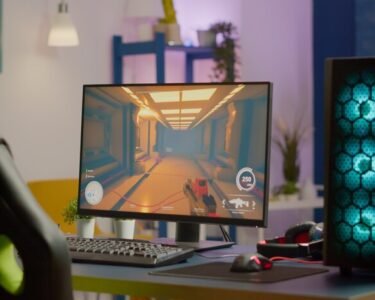Meta, led by Mark Zuckerberg, has introduced the Segment Anything Model 2 (SAM 2), a significant advancement in computer vision AI. This model is designed for real-time prompt object segmentation in both images and videos and is available under the Apache 2.0 license, promoting open-source use.
SAM 2 aims to enhance AI capabilities in various fields by providing better accuracy and performance in object segmentation without needing pre-trained examples.
Meta SAM 2 Computer Vision AI deep dive.

Meta SAM 2 AI Model.
Key Takeaways:
- Meta introduces Segment Anything Model 2 (SAM 2), a breakthrough in computer vision AI.
- SAM 2 excels in real-time prompt object segmentation for images and videos.
- Released under the Apache 2.0 license, making it open-source and encouraging innovation.
- SAM 2 is the first unified model for real-time prompt object segmentation, versatile for various applications.
- The SA-V dataset is larger and more annotated, enhancing training and evaluation.
- SAM 2 features zero-shot generalization, segmenting objects without pre-trained examples.
- Enhanced accuracy and performance, applicable in fields like marine science, satellite imagery, and medical research.
- Enables new video effects, faster annotation tools, and improved computer vision systems for AI, robots, and self-driving cars.
- Open-source nature promotes accessibility, innovation, and potential economic growth.
- Contributes significantly to medical and scientific research with new tools and methodologies.
- Practical demonstrations show SAM 2’s robustness and versatility in tracking objects in complex scenarios.
- Valuable in robotics and industrial environments, enhancing operational efficiency and accuracy.
- Collaboration between Meta and Nvidia highlights the model’s significance and future potential.
- SAM 2 drives innovation and practical applications across various industries, paving the way for advancements and economic growth.
A Leap in Computer Vision AI.
SAM 2 stands out as the first unified model specifically designed to tackle real-time prompt object segmentation seamlessly across both image and video domains. Its versatility and open-source nature empower developers and researchers to harness its capabilities without the constraints of licensing, fostering a collaborative and innovative ecosystem.
The introduction of the SA-V dataset alongside SAM 2 marks a significant milestone in the field. Surpassing existing video segmentation datasets in size and annotation richness, the SA-V dataset provides an invaluable resource for training and evaluating models like SAM 2. This extensive dataset enhances the model’s ability to generalize effectively across a wide range of scenarios, making it highly adaptable to real-world applications.
One of the key strengths of SAM 2 lies in its remarkable zero-shot generalization capability. Unlike many models that rely on pre-trained examples, SAM 2 can segment objects without prior exposure, showcasing its exceptional adaptability. This feature, combined with its enhanced accuracy and performance compared to previous iterations, positions SAM 2 as a catalyst in the realm of computer vision AI.
Meta SAM 2 Explained.
Here is a selection of other articles from our extensive library of content you may find of interest on the subject of Meta AI models:
- Meta SAM 2 computer vision AI model shows impressive results.
- New Llama 3 LLM AI model released by Meta AI.
- New Llama 3.1 405B open-source AI model released by Meta.
- New Meta Llama 3.1 405b open-source AI model full analysis and.
- Meta’s new Code Llama 70B performance tested.
The potential applications of SAM 2 span a wide array of fields, from marine science and satellite imagery analysis to medical research and beyond. Its ability to precisely segment objects in real-time opens up exciting possibilities for:
- Video effects and creative applications.
- Faster and more efficient annotation tools.
- Enhanced computer vision systems for AI, robotics, and self-driving vehicle.
The open-source nature of SAM 2 is a catalyst for accessibility and innovation in AI technology. By making this powerful tool freely available, Meta aims to accelerate economic growth by driving advancements across various sectors. Moreover, SAM 2 has the potential to make significant contributions to medical and scientific research, providing researchers with innovative tools and methodologies to tackle complex challenges.
Practical demonstrations of SAM 2 showcase its remarkable ability to track objects in videos, even in complex and dynamic scenarios. These real-world examples highlight the model’s robustness and versatility, making it a valuable asset in fields such as robotics and industrial environments, where it can greatly enhance operational efficiency and accuracy.
The collaboration between industry giants Meta and Nvidia, represented by Mark Zuckerberg and Jensen Huang, underscores the significance of SAM 2. Their discussions revolve around the transformative potential of this model and its role in shaping the future of AI technology. This partnership reflects the industry’s recognition of SAM 2’s immense value and its potential to drive innovation on a global scale.
SAM 2 represents a monumental leap forward in the field of computer vision AI. With its enhanced capabilities, open-source ecosystem, and potential for widespread adoption, this model is poised to transform various industries and drive significant advancements in AI technology. As researchers, developers, and industry leaders embrace SAM 2, we can expect to witness a new era of innovation, efficiency, and growth across multiple domains.







